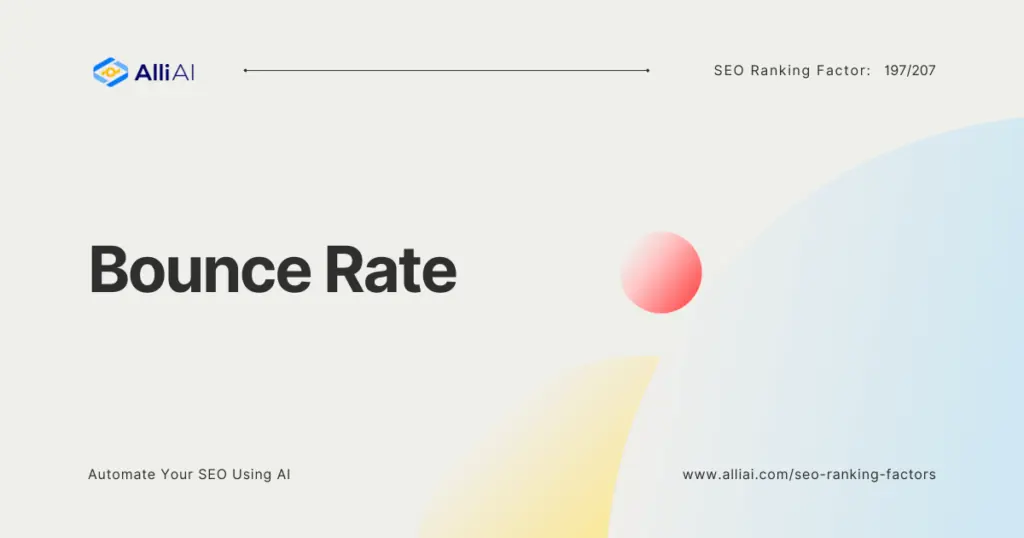Explanation of Bounce Rate
Bounce rate is a metric that measures the percentage of visitors to a website who navigate away from the site after viewing only one page. Essentially, it’s an indication of engagement, or lack thereof, signifying how well or poorly a webpage satisfies the user’s search intent. A “bounce” is when a user visits a page and leaves without performing any further actions: no clicking on links, no engaging with content beyond the initial landing page.
Imagine walking into a bookstore looking for a cookbook. You step inside, glance around, and if the first section you see is filled with science fiction novels, you’re likely to leave immediately to find another bookstore more aligned with your initial need. In this analogy, the bookstore’s inability to present you with relevant content right away is akin to a webpage failing to meet the user’s intent, resulting in a high bounce rate.
Why is Bounce Rate Important in SEO?
Search engines, particularly Google, prioritize user experience above all. A high bounce rate can be an indicator that a site is not delivering valuable content or providing a good user experience, potentially leading to lower rankings in search engine results pages (SERPs). It signals to search engines that users are not finding what they’re looking for on a webpage, perhaps because the content is not relevant, the page loads too slowly, or the site’s navigation is confusing.
How Bounce Rate Affects SEO
Studies have shown a correlation between bounce rate and a website’s position in SERPs. For instance, a RocketFuel study suggests that most websites will see bounce rates between 26% to 70%, with the average landing somewhere around 41% to 55%. Sites ranking higher in Google’s search results tend to have lower bounce rates, indicating a better match between page content and user search intent.
While Google has not explicitly confirmed bounce rate as a direct ranking factor, they have acknowledged that they use interaction metrics as signals to gauge the quality of a website. This is further supported by case studies from SEMRush and Moz, which have observed that webpages with lower bounce rates tend to rank better in search engine results.
FAQ
How can I improve my website’s bounce rate?
To improve your website’s bounce rate, focus on enhancing the overall user experience. This can involve improving page load times, making navigation more intuitive, and ensuring your content directly addresses the keywords and phrases your site is targeting. Also, consider the layout and design of your pages – they should be engaging and encourage visitors to explore further.
Does a high bounce rate always indicate poor performance?
Not necessarily. A high bounce rate isn’t always bad. For example, if a user visits a single article on your blog, finds exactly what they need, and leaves satisfied, your content has served its purpose. Context is key when analyzing bounce rate.
How does bounce rate compare to exit rate?
Bounce rate measures the percentage of single-page sessions, whereas exit rate indicates the percentage of exits from a page, regardless of how many pages on the site the user viewed prior. Both metrics provide insights but focus on different aspects of user behavior.
Conclusion
Bounce rate is a complex but revealing metric that can provide invaluable insights into how well a website meets the needs and expectations of its visitors. While not a direct ranking factor, its impact on user experience undoubtedly influences SEO performance. By understanding and improving bounce rate, website owners can enhance their SEO strategy, foster better engagement, and ultimately achieve higher rankings in search results. As the digital landscape continues to evolve, keeping a close eye on bounce rate and continuously striving to improve it will remain a cornerstone of successful SEO practices.






